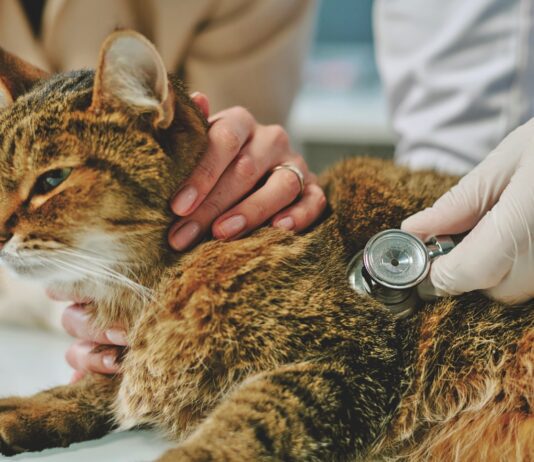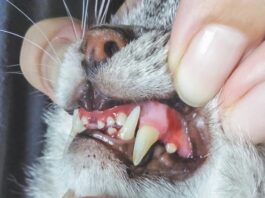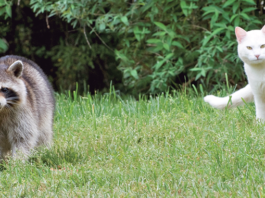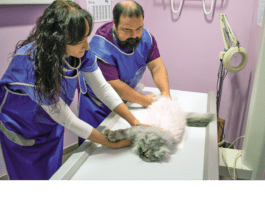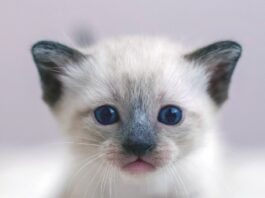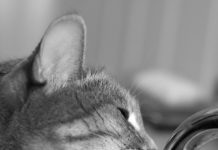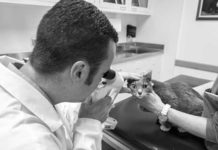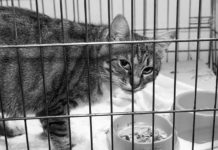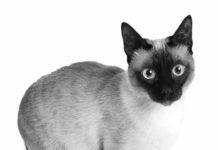The Challenge of Long-term Steroids for Cats
Corticosteroids have proven effective in treating a variety of conditions from allergic reactions to brain disease, but they present a balancing act for both owners and veterinarians. Owners, faced with their cats experiencing any one of a long list of health problems, must weigh if long-term use is worth the risk of steroids side effects. At the same time, veterinarians must determine the lowest dose of medication to control the condition.
Cat Scratch Fever Spikes in January
Hand-wrestling your kitten or newly adopted cat may seem like harmless play, but if either would happen to scratch you, you could develop an infection requiring treatment for cat scratch disease (CSD). This rare but potentially serious condition is estimated to affect about 12,500 people annually in the U.S., including 500 hospitalized for treatment. The incidence is higher than medical experts anticipated, according to a new study released by the Centers for Disease Control (CDC).
A Promising Drug for Feline Herpes Virus
Eye problems occur frequently in cats with feline herpes virus 1 (FHV-1) and can lead to blindness if untreated. Current medications must be applied several times daily and evidence of their effectiveness is lacking.
When Blindness Suddenly Strikes
If your usually confident cat starts acting confused, bumping into objects and having difficulty finding his food bowl, he could have a rare but serious condition. Sudden blindness can develop seemingly overnight and needs immediate veterinary intervention. Depending on the timing, an ophthalmologist may be able to preserve some vision. The condition has many causes, from central nervous system disease to inflammation; however, As a veterinary ophthalmologist, I would say the most common cause of sudden blindness that I see among cats who appeared otherwise normal prior to the vision loss is a condition called hypertensive retinopathy, says Eric C. Ledbetter, DVM, ACVO, Associate Professor of Ophthalmology at Cornell University Hospital for Animals.
A New Technique to Ease Pain After Spay Surgery; Hope for Feline Heart Disease
Not too long ago, conventional wisdom held that animals felt little pain and providing relief was unnecessary after spaying and neutering. Veterinary medicine today emphasizes the recognition and management of pain in animals, with professional organizations issuing guidelines, offering courses for members and expanding efforts to educate owners. Researchers, too, are pursuing pain relief, in one case discovering that a novel method of drug delivery for spayed cats provides relief.
What Awaits a Maine Coon Who Has a Serious Case of Gingivitis?
I am very sorry to hear about your kittys problems, and I understand your concern completely. Dental disease is fairly common in cats, and diseases of the gingiva, or gums (the part of the soft tissue lining in the mouth that surrounds the teeth) can cause problems ranging from discomfort to tooth loss, depending upon the cause and severity of the condition. Perhaps a brief discussion of what gingivitis is and what may cause it would be helpful.
How to Navigate a Second Opinion
When you bring a cat into your family, you make decisions in his best interest for food, litter and veterinary care. As your cats healthcare proxy, youre also responsible for routine check-ups, dental health and vaccinations. Sometimes, however, you may need to make more difficult decisions, perhaps to seek a second opinion when the current treatment isnt working.
Easily Missed Signs of Skin Cancer in Cats
These tumors are often diagnosed in their advanced stages because of the cats exceptional ability to hide signs of serious disease. However, new research and emerging targeted therapies have the potential to improve lives. The advances may be able to provide a better outcome to patients stricken with these cancers, says Cheryl Balkman, DVM, ACVIM, Senior Lecturer and Chief of Oncology at Cornell University College of Veterinary Medicine.
Dont Ignore Extended Head Pressing
If your cat firmly presses his head against a wall or sofa for extended periods for no apparent reason, dont be quick to dismiss it as attention seeking. He could be facing a significant health problem. Head pressing is an abnormal behavior, Dr. Kaplan says. It should be considered an emergency, and veterinary attention should be sought immediately.
Vomiting More Than Once a Week Warrants an Exam
Vomiting can be caused by many problems, ranging from obstruction of the gastrointestinal tract by hairballs or ingested string and other objects to metabolic diseases like kidney disease and hyperthyroidism, to inflammatory diseases like inflammatory bowel disease, to the ingestion of toxic substances such as plants, to cancer.
Studying the Genetic Basis of Feline Heart Disease
The disease takes several forms: hypertrophic cardiomyopathy, where the walls of the heart are thick; restrictive, where the walls are stiff; dilated, where there is thinning and weakening of the heart muscle, and arrhythmogenic right ventricular, where fat and scar tissue replace heart muscle, primarily in the right side of the heart.
Geography’s Role in Feline Ear Infections
Ear infections are relatively uncommon in cats - infections of the external ear occur twice as often in dogs. However, you should be aware of these significant facts: A study shows that geography can determine if your cat is likely to develop an ear infection. Left untreated, an infection can become chronic, causing pain and irreparable damage to the ear canal or eardrum. You can become the first line of defense in identifying an ear infection. Simply check your cats ears by giving them a quick rub - something you probably do everyday. Whether your cat shows pleasure or discomfort is a clue to the ears condition.

